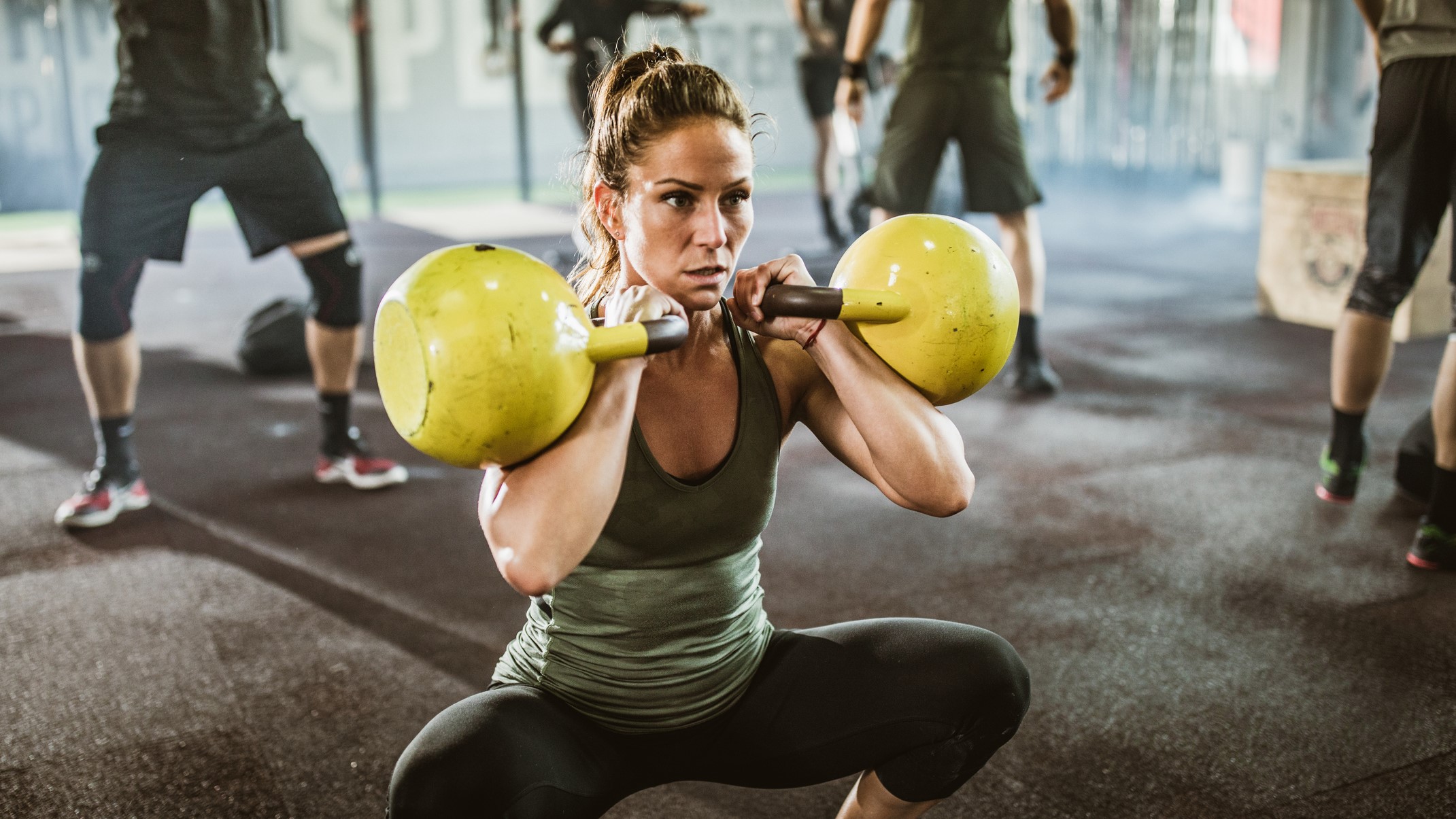
Work smarter, not harder, with these five kettlebell leg exercises. Torch your quads and build a stronger core with quad-dominant exercises that front-load the body using simple tricks rather than relying on weight alone.
We recommend a medium to heavy kettlebell or two if you prefer doubling up. You won’t need heavy weights for this 30-minute workout, just a few tips for working smarter. We stumbled across this workout accidentally and loved it. While none of the leg exercises reinvent the wheel — expect the usual variations of squats and lunges — they’re cleverly adapted.
Grab one of the best kettlebells for weightlifting and get stuck in.
What is the 5-move kettlebell leg workout?
The quad workout has been masterminded by That Fit Friend, who reiterates that you can “build big and strong quads” without using barbells or machines and using minimal equipment instead. These are five of his favorite kettlebell exercises for building strong quads as part of a wider Little Leg Series.
Here are your five single kettlebell quad exercises, and we recommend checking over the video below. Rest between sets: 60 seconds to 2 minutes.
A1. Heel elevated goblet squat 3x15
B1. Single-leg goblet squat 4x8 per side
Get instant access to breaking news, the hottest reviews, great deals and helpful tips.
C1. Ipsilateral (same side) Bulgarian split squat 3x8 per side
C2. Seated leg extension 3x2 per side
D1. Contralateral (opposite side) step-up 2x10 per side.
“This workout will leave you with a serious quad pump!” writes Jake. “Good luck.”
As a personal trainer, what I love about the quad workout is its simplicity. These leg exercises are suitable for beginners and those who train regularly, and you can simply adapt your weights accordingly.
If you haven’t already clocked it, this leg workout is about foot placement — note where Jake’s feet are. During the first exercise, he elevates his heels on a surface, which changes the exercise to be more quad-dominant. Had he elevated his toes, this exercise would have switched emphasis to the hamstrings.
During single-leg goblet squats, distribute your weight 80% into the front leg and 20% in the back leg.
Ipsilateral (same-sided) split squats load the muscles on the side of the elevated leg and switch arms when you switch legs. Let the knees track, but avoid lifting your standing heel off the floor. If you’re very mobile, your knee might track over your toes, which is fine and changes from person to person, despite popular belief that your knee should always track behind.
The seated quad extensions are my favorite. You can sit anywhere to do this and simply hook your foot through the handle. Keep your core engaged and back straight as you’ll need plenty of torso activation to prevent swinging. Aim for full extension, and ensure the crease of your knee rests on the seat.
Step-ups can be as easy or difficult as you want them to be. To make the move harder without heavier weights, find a higher step. Press through your standing heel and fully extend the leg.
Jake recommends playing with tempo and increasing your frequency if you want to see muscle gains. Tempo is a popular way to work — you can slow the eccentric or concentric phases of the exercise, add pauses, or try 1.5 reps. As demonstrated during this quad workout, use angles to elevate your feet in different positions, which also promotes stretching and develops your range of motion.
If you’re familiar with the leg exercises but don’t train with kettlebells very often, we cover how to hold a kettlebell properly here.
More from Tom's Guide
- Forget push-ups, this kettlebell shoulder workout chisels your pecs and shoulders in 3 moves
- Oura Ring new features unveiled, here's what you need to know
- I did a sing leg Bosu deadlift every day for a week, and it nearly beat me.

Sam Hopes is a level 3 qualified trainer, a level 2 Reiki practitioner and fitness editor at Tom's Guide. She is also currently undertaking her Yoga For Athletes training course.
Sam has written for various fitness brands and websites over the years and has experience across brands at Future, such as Live Science, Fit&Well, Coach, and T3.
Having coached at fitness studios like F45 and Virgin Active and personal trained, Sam now primarily teaches outdoor bootcamps, bodyweight, calisthenics and kettlebells.
She also coaches mobility and flexibility classes several times a week and believes that true strength comes from a holistic approach to training your body.
Sam has completed two mixed doubles Hyrox competitions in London and the Netherlands and finished her first doubles attempt in 1:11.

